-
About
- About Listly
- Community & Support
- Howto
- Chrome Extension
- Bookmarklet
- WordPress Plugin
- Listly Premium
- Privacy
- Terms
- DMCA Copyright
- © 2010-2025 Boomy Labs
 Jodie Taylor
Jodie Taylor
Listly by Jodie Taylor
Through the method of curation, we arrive at the convergence of critical pedagogy and pedagogy 3.0.
The “critical” in Critical Pedagogy 3.0 refers to the ability to recognise, analyse and critique the social, cultural and political processes that are a part of knowledge production. Championed by Paulo Freire, bell hooks and Henry Giroux, among others, at the centre of critical pedagogy is an understanding of the unjust operations of power. For example, critical pedagogues teach students to think critically about their education situation, recognise it as a structure of authority, be actively engaged in holding it accountable, and make change through participation and self-empowerment. Critical pedagogy demands that educators actively transform oppressive practices and structures making education democratic, emancipatory, and empowering to all students.
Following on from the user-generated content revolution of Web 2.0, Web 3.0 bespeaks the new connective intelligence of computing. The “3.0” in Critical Pedagogy 3.0 builds on this in relation to new ways education can be accessed and our expanding ideas of what counts as legitimate educational texts and approaches in an online environment. Jackie Gerstein (2013) defines pedagogy 3.0 a connectivist and heutagogical approach to teaching and learning. “The teachers, learners, networks, connections, media, resources, tools create a unique entity that has the potential to meet individual learners’, educators’, and even societal needs. Many resources for Education 3.0 are literally freely available for the taking”.
With this in mind, I have created this dynamic resource featuring a selection of articles to inspire pedagogy and assist with creating, curating and delivering educational materials to tertiary level students in the era of Web 3.0. Resources cover a variety of topics including multimodal literacies, digital curation, eLearning, differentiated instruction and peer assessment which will be of particular relevance to my colleagues teaching CIU modules at SAE.

A list of peer-reviewed open access journals and academic texts featuring current scholarship on teaching and learning theories, practices and technologies by researchers and practitioners working in higher education. | Hybrid Pedagogy, Radical Pedagogy, The International Journal of Critical Pedagogy, Journal of University Teaching & Learning Practice, and JOLT - Journal of Online Learning and Teaching

This project started when several professors asked for specific suggestions on digital or collaborative projects they could do with their students. We asked the HASTAC Scholars to provide specific assignments, in-class exercises and other projects. The response was awesome - over 80 specific and proven suggestions to shake up your syllabus!
The Pedagogy Project is organized into nine sections, with numerous examples of projects, assignments and concepts in each area. Many of the projects overlap into different sections, so take some time to explore each of them!
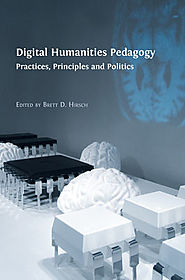
In 2012, digital humanities has multiple established and emerging centers, tenured professors, programs, and initiatives, its own book series and journals, and its own funding office at the National Endowment for the Humanities. The New York Times and robust Twitter, Facebook and blogging communities host fervent debates about defining the field and the nature of digital humanities work and considering who—computer scientists, new media critics, tenured English and history professors, undergraduates, graduates, alternative career scholars, women, queer, transgender, people of color—takes advantage of these new and limited resources.4 In all regards, in discussing how we define the field and who or what we include in it, we must also consider what students should do and should learn in a digital humanities program. This chapter will explore this question (the why, the how, and the what students should learn) by discussing three interconnected topics that influence the development of undergraduate digital humanities curricula: the history of digital humanities as a history tied to curriculum development; the role that institutional infrastructure is playing in program development; and current notions of “digital literacy” in undergraduate education.
Ch 15 from Digital Humanities Pedagogy: Practices, Principles and Politics

To help your students get the education they deserve, building a community within the online classroom is a solid way to get them thinking, interacting, and learning. But building an online learning community is not easy. Here, you'll find 8 ways to show you to build an engaged community for your online school.

Storytelling in any format is about making meaning. While the essence of the stories we tell may remain the same, the ways in which we can now share these stories have changed dramatically with the development of digital communication technologies. Access to simple, easy to use media production tools and resources in conjunction with the potential for immediate and universal online publication has significant implications for literacy thinking and practice. This website is an evolving compilation of resources designed to support the development of student multimodal authoring at all year levels. It features examples of different types of student multimodal compositions to demonstrate the rich variety of choices available, along with practical resources to support text production.

To help your students get the education they deserve, building a community within the classroom is a solid way to get them thinking, interacting, and learning.

Digital Pedagogy Lab is part of the educational outreach of the Hybrid Pedagogy Inc. non-profit and focuses on the implementation of critical digital pedagogy in education at all levels. Our open-access peer-reviewed journal champions the voices of often unheard teachers and learners. We also offer professional development opportunities that prepare learners, educators, librarians, and administrators to teach, collaborate, and think with digital technology.

Reflecting and responding to your reflections will directly affect your students as you change and adapt your teaching. You will reteach and reassess the lessons you have taught, and this will allow students the chance to gain new skills and strengthen learning. Creating evaluation models will help you to know whether the actions you have taken have had the intended effect.
This Cambridge University Guide provides a comprehensive overview of reflective practice models and techniques and presents an irrefutable account of the benefits of teacher-reflection.

learning.futures is about re-engineering subjects to enable students to experience a seamless integration of the best of online and face-to-face on campus learning. learning.futures is characterised by the practices developed through the Learning2014 initiative. These practices aim to combine the best of online and face-to-face teaching and make use of the new spaces on campus that have been designed to accommodate approaches such as flipped learning and collaborative learning.

The concept of digital curation has evolved from its original use. While the digital preservation of artifacts is still the primary domain of digital curation, due to Web 2.0/social media applications it has allowed anyone to easily create a topic centered library online to share with the world. Assets found online can now be quickly collated into a visually appealing web site using freely available tools. This descriptive paper explores the potential use of digital curation within three tertiary institutions.
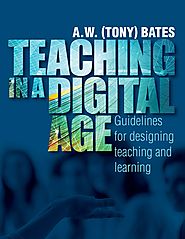
This is a Creative Commons book which examines the underlying principles that guide effective teaching in an age when all of us, and in particular the students we are teaching, are using technology. A framework for making decisions about your teaching is provided, while understanding that every subject is different, and every instructor has something unique and special to bring to their teaching.The book enables teachers and instructors to help students develop the knowledge and skills they will need in a digital age: not so much the IT skills, but the thinking and attitudes to learning that will bring them success.
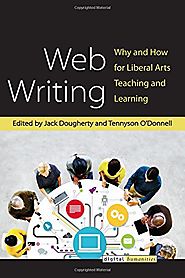
Web Writing: Why and How for Liberal Arts Teaching and Learning by Jack Dougherty and Tennyson O'Donnell.

Blogging can improve students’ writing skills and build their confidence as writers. By blogging, students can take ownership of their writing, become better observers of others’ writing, and develop a more immediate and powerful understanding of audience. Blogs encourage experimenting and risk-taking, seriousness and play, and they foster an increased awareness of private and public writing. Blogging blends both the freeing aspect of short pieces that can be written in a relatively low-stakes environment with the sense of claiming one’s own voice and learning how to develop analysis and articulate ideas to a larger public. Guided by clear expectations of what is required in a class blog, students can see their writing develop over the course of the term. This handout describes strategies for using blogs as a writing tool in the classroom.
Blogging Beyond the Classroom is an online forum for exchanging ideas and swapping experiences of learning and teaching with blogging and other social media. It aims to help students & teachers in HE explore blogging as a learning & communication tool. Helen Rogers set up the site with the support of a Teaching Development Grant from the Higher Education Academy.
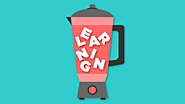
We've collected resources from Edutopia and the web to help you navigate the possibilities of blended learning, an approach that combines face-to-face instruction with technology-mediated learning.

At eLearning Industry you will find the best collection of eLearning articles, eLearning concepts, eLearning software, and eLearning resources. Post your eLearning article.

A website where our inspiring people at Navitas share their Learning & Teaching stories, initiatives, projects, events and more. Use this site to kick-start your own conversations, connections and collaborations here at Navitas!
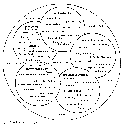
"Effective teaching is not a set of generic practices, but instead is a set of context-driven decisions about teaching. Effective teachers do not use the same set of practices for every lesson . . . Instead, what effective teachers do is constantly reflect about their work, observe whether students are learning or not, and, then adjust their practice accordingly (Glickman, 1991, p. 6).
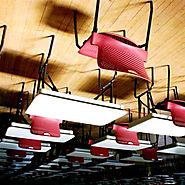
“Flipping the classroom” has become something of a buzzword in the last several years, driven in part by high profile publications in The New York Times (Fitzpatrick, 2012); The Chronicle of Higher Education (Berrett, 2012); and Science (Mazur, 2009); In essence, “flipping the classroom” means that students gain first exposure to new material outside of class, usually via reading or lecture videos, and then use class time to do the harder work of assimilating that knowledge, perhaps through problem-solving, discussion, or debates.
Find out why and how it works....
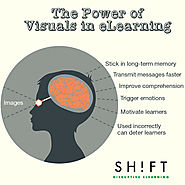
We are now in the age of visual information where visual content plays a role in every part of life. As 65 percent of the population is visual learners, images are clearly key to engaging people in eLearning courses. Moving and still images have been included in learning materials for decades, but only now has faster broadband, cellular networks, and high-resolution screens made it possible for high-quality images to be a part of eLearning visual design. Graphic interfaces made up of photos, illustrations, charts, maps, diagrams, and videos are gradually replacing text-based courses. In this post, we will dig deep into some statistics and facts to further convince of why eLearning developers should embrace visuals when creating their courses.
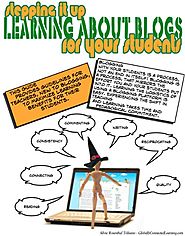
A guide (in several parts) for teacher, new to blogs and blogging with their students. The guide will be based on the assumption, that in order for a teacher to facilitate quality student blogs, the teacher needs to have their own understanding of quality blog writing.
This poster size guide for teachers allows you to compare the functionality and pedagogical advantages of some standard Moodle tools, adding a column to indicate how tricky the tool is to set up.
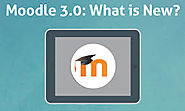
Everything you need to know to help tutors set up their Moodle.
Moodle 3.0 the next stable release of the most popular open source LMS "Moodle" is fully packed with new features and lot of improvements.

Give your Moodle a makeover and embed social content in your online classroom. This post is about embedding your curated content in a Moodle using four of my favourite services: Twitter, Pinterest, Youtube and Storify. With these tools you can Keep reading...
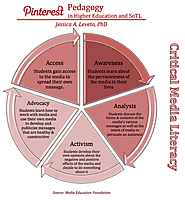
Digital curation is has become somewhat of a buzz word within higher education in recent times. However, its value is far from fleeting. Digital curation has been defined as: “An active process whereby content/artefacts are purposely selected to be preserved for future access. In the digital environment, additional elements can be leveraged, such as the inclusion of social media…the ability for other users to suggest content…and the critical evaluation and selection of the aggregated content” (Antonio, Martin & Stagg, 2012). For this reason, it is a valuable asset for teaching media literacy within higher education settings. This diagram illustrates how one platform, Pinterest, may be used this way.

Dr Jodie Taylor is a Senior Lecturer, Postgraduate Supervisor and Curriculum Designer. Through the lens of critical pedagogy, Jodie’s praxis-orientated approach to education is guided by the desire to help students become aesthetically inspired, media literate, culturally sensitive, critical and creative thinkers.
She is the author of Playing it Queer: Popular Music, Identity & Queer World-making (Peter Lang 2012), and co-author of Redefining Mainstream Popular Music (Routledge 2013) and The Festivalisation of Culture (Ashgate 2014). She has published more than 30 scholarly articles & chapters on popular music, gender, sexuality and ageing; queer theory, youth culture and subcultural style; and ethical relations in ethnographic fieldwork.